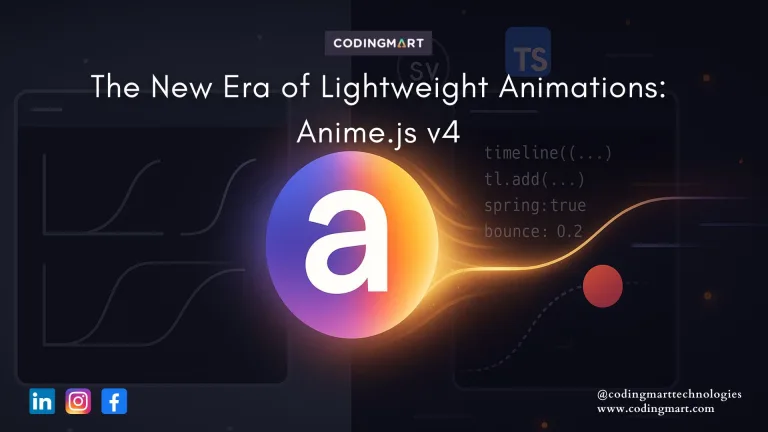blogs
Unveiling Next.js 13.4 : Empowering the Future of Web Development

Today, we have an exciting update that will revolutionize web development.
Next.js, the popular React framework, has released its highly anticipated version 13.4, marking a significant milestone in web development. This update brings a range of powerful features and enhancements that will revolutionize how we build dynamic and personalized web applications.
Next.js 13.4 introduces Server Actions, an innovative feature designed to simplify and streamline server-side operations. Let’s explore them below..
Discover the Power of Next.js 13.4 : Next.js 13.4 introduces the groundbreaking App Router, a pivotal upgrade that brings enhanced routing capabilities to the forefront. With the App Router, developers can effortlessly create nested routes and layouts, streamline data fetching, and harness the power of streaming and suspense to elevate performance. Additionally, the App Router boasts built-in SEO support, making search engine optimization a breeze.
Unlock Limitless Possibilities : At the core of Next.js lies its philosophy of zero-setup, leveraging the filesystem as an API. With the all-new App Router, this principle has been taken to new heights. Now, you can define layouts, nest UI components, and gain greater control over loading and error states. The revamped router architecture, built on React Server Components and Suspense, delivers a more flexible and streamlined development experience.
Simplify Development and Amplify Enjoyment : Next.js 13.4 is dedicated to simplifying the development process and ensuring an enjoyable coding experience. Embracing the “only JavaScript” approach, Next.js treats everything as a function. Data fetching has been streamlined using the familiar async/await syntax, enabling seamless data retrieval and component composition. Securely fetch data from the server and enhance your applications by integrating Server Components from the broader ecosystem.
Enhance Performance, Unleash Possibilities : Next.js 13.4 introduces automatic server rendering and code splitting, taking care of component-level code splitting. This results in reduced bundle sizes and improved initial page load performance. Moreover, the new router architecture allows for progressive streaming of UI content, facilitating smoother transitions and an enhanced user experience.
Continued Innovation and Exciting Possibilities : Next.js is committed to pushing the boundaries of web development, and version 13.4 is just the beginning. The team behind Next.js has also introduced Turbopack (currently in beta), an incremental bundler optimized for JavaScript and TypeScript, written in Rust, crafted by the creators of Webpack, delivers unparalleled performance at scale, and Server Actions (currently in alpha), simplifying server-side mutations for developers.
Streamline Server-Side Mutations with Server Actions : Server Actions, currently in alpha, offer a seamless way to handle server-side mutations in Next.js applications. With Server Actions, developers can perform complex operations, such as updating databases, sending requests to APIs, or interacting with external services, all within the Next.js framework. This eliminates the need for additional middleware or boilerplate code, saving development time and reducing complexity.
Simplified API Calls and Data Manipulation : Next.js 13.4’s Server Actions provide a clean and intuitive syntax for making API calls and manipulating data on the server. Developers can easily define server-side functions that encapsulate their business logic, leveraging the power of Next.js and its ecosystem. Whether you need to authenticate users, process form submissions, or trigger server-side events, Server Actions have got you covered.
Enhanced Security and Control : Server Actions prioritize security by enabling server-side execution of critical operations. By keeping sensitive data and business logic on the server, you can minimize client-side vulnerabilities and ensure the integrity of your application. Additionally, Server Actions provide fine-grained control over authorization and access control, allowing you to enforce business rules and validate user actions effectively.
Unlocking New Possibilities with Server Actions : Server Actions open up a world of possibilities for developers. By leveraging the simplicity and power of Next.js, you can now create sophisticated web applications that seamlessly combine client-side interactivity with server-side mutations. Whether you’re building e-commerce platforms, real-time collaboration tools, or data-intensive applications, Server Actions empower you to achieve your development goals efficiently.
The Future of Web Development Awaits..
Next.js 13.4’s Server Actions represent a significant step forward in web development, providing a unified framework for server-side mutations. As Server Actions evolve out of the alpha stage, developers can expect additional features, optimizations, and integrations to further enhance their productivity and application performance.
We encourage all developers and businesses to take advantage of Next.js 13.4 and experience the future of web development. With its improved routing capabilities, simplified data fetching, and enhanced performance, Next.js continues to be a leading choice for building dynamic and personalized web applications.


